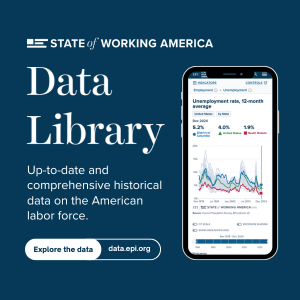My Favorite Measure of Labor Market Health is Looking a Little Better
It’s well-covered ground that declines in the unemployment rate have been overstating improvements in labor market conditions in this recovery, due to the fact that so many potential workers have dropped out of, or never entered, the labor force because job opportunities are so weak. By my estimates, about a third of the decline in the unemployment rate since its peak in the fall of 2009 was due to potential workers being sidelined, not potential workers finding work. (Note, workers being sidelined was not what caused the drop in the unemployment rate in January, but it has been the dominant factor for the last four+ years.)
Given that declines in the unemployment rate are providing a murky picture of trends in labor market health in this recovery, I think a much more useful indicator is the employment-to-population ratio of “prime-age” workers (workers age 25–54). (In fact, I’ve sometimes referred to this as my “desert island” measure—i.e. if I were headed to a desert island and could only take one measure with me to judge current trends in labor market conditions, this would be it.) The employment-to-population ratio (or EPOP) is simply the share of the population with a job, so this measure entirely sidesteps the issue of whether potential workers are in the labor force. Restricting our attention to prime-age workers serves the important purpose of avoiding confounding changes in employment that are not due to labor market conditions but are instead due to longer-run structural factors, such as baby boomers hitting retirement age and declining employment of young adults due to increased college enrollment.
Lately, the prime-age EPOP is showing a little spunk! There was a big jump up between December and January, but you shouldn’t focus on that because the new January population controls might be at play. If you look over the past year, the prime-age EPOP increased by eight-tenths of a percentage point, which isn’t exactly fast, but it is something.
Of course, it still has a long way to go. In early 2007, the prime-age EPOP was 80.2 percent. It dropped 5.4 percentage points to 74.8 percent by the end of 2009, and has since increased only 1.7 percentage points to 76.5 percent. That means that, according to this, my favorite indicator of trends in labor market conditions, the labor market has now recovered a little less than a third of what it lost in the downturn.
Enjoyed this post?
Sign up for EPI's newsletter so you never miss our research and insights on ways to make the economy work better for everyone.

